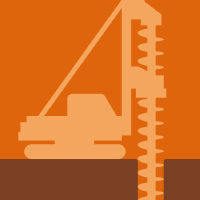Topic Menu
► Topic MenuTopic Editors


Support Theory and Technology of Geotechnical Engineering
Topic Information
Dear Colleagues,
Support theory and technology of geotechnical engineering involve a wide range of fields, including transportation, roads and highways, railways and public transport systems, underground stations, water and wastewater transmission, power and energy, and underground storage facilities. They have the characteristics of difficult construction, long cycle, high cost and far-reaching social impact. At present, they have become an important research discipline. This topic focuses on the support theory and technology of underground space and covers a very wide scope of underground space and geotechnical engineering, including geo-investigation, geomechanics analysis, support design and modelling, construction, and monitoring; tunnels and large underground and earth-sheltered structure maintenance and rehabilitation; and underground space and underground space environment planning and development.
We invite papers on innovative technical developments, reviews, case studies, as well as analytical and assessment papers from different disciplines that are relevant to the topic of support theory and technology of geotechnical engineering.
Prof. Dr. Qi Wang
Dr. Bei Jiang
Dr. Xuezhen Wu
Dr. Hongke Gao
Topic Editors
Keywords
- geotechnical engineering
- support theory and technology
- rock test and geomechanics analysis
- energy and underground storage facilities
- geo-investigation and analysis
- underground environment
Participating Journals
| Journal Name | Impact Factor | CiteScore | Launched Year | First Decision (median) | APC | |
|---|---|---|---|---|---|---|

Remote Sensing
|
5.0 | 7.9 | 2009 | 23 Days | CHF 2700 | Submit |

Energies
|
3.2 | 5.5 | 2008 | 16.1 Days | CHF 2600 | Submit |

Minerals
|
2.5 | 3.9 | 2011 | 18.7 Days | CHF 2400 | Submit |

Geosciences
|
2.7 | 5.2 | 2011 | 23.6 Days | CHF 1800 | Submit |

Geotechnics
|
- | - | 2021 | 15.6 Days | CHF 1000 | Submit |

MDPI Topics is cooperating with Preprints.org and has built a direct connection between MDPI journals and Preprints.org. Authors are encouraged to enjoy the benefits by posting a preprint at Preprints.org prior to publication:
- Immediately share your ideas ahead of publication and establish your research priority;
- Protect your idea from being stolen with this time-stamped preprint article;
- Enhance the exposure and impact of your research;
- Receive feedback from your peers in advance;
- Have it indexed in Web of Science (Preprint Citation Index), Google Scholar, Crossref, SHARE, PrePubMed, Scilit and Europe PMC.



